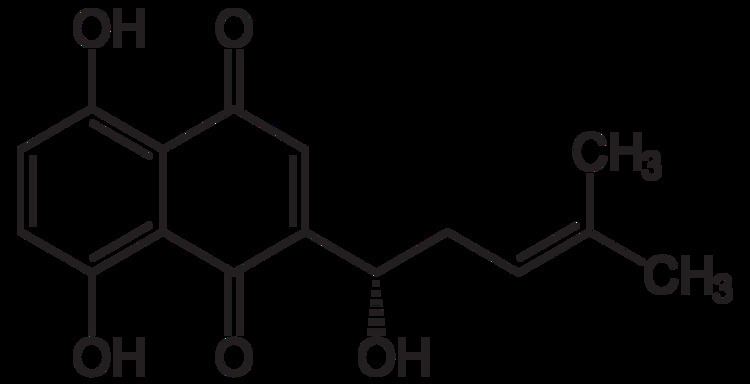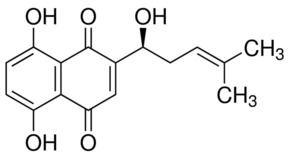Formula C16H16O5 | Molar mass 288.29 g/mol | |
 | ||
Appearance Red-brown crystalline prisms | ||
Alkannin is a natural dye that is obtained from the extracts of plants from the borage family Alkanna tinctoria that are found in the south of France. The dye is used as a food coloring and in cosmetics. It is used as a red-brown food additive in regions such as Australia, and is designated in Europe as the E number E103, but is no longer approved for use.

The chemical structure as a naphthoquinone derivative was first determined by Brockmann in 1936. Alkannin has a deep red color in a greasy or oily environment and a violet color in an alkaline environment.

The enzyme 4-hydroxybenzoate geranyltransferase utilizes geranyl diphosphate and 4-hydroxybenzoate to produce 3-geranyl-4-hydroxybenzoate and diphosphate. These compounds are then used to form alkannin.

Alkannin is an antioxidant and has an antimicrobial effect against Staphylococcus aureus and Staphylococcus epidermidis. It is also known to have wound healing, antitumor, and antithrombotic properties.

Shikonin is also found in the Chinese herbal medicine plant Lithospermum erythrorhizon, the red-root gromwell, (紫草 zicao, Pinyin: zǐcǎo). The dried root is a Chinese herbal medicine with various antiviral and biological activities, including inhibition of human immunodeficiency virus type 1 (HIV-1).

